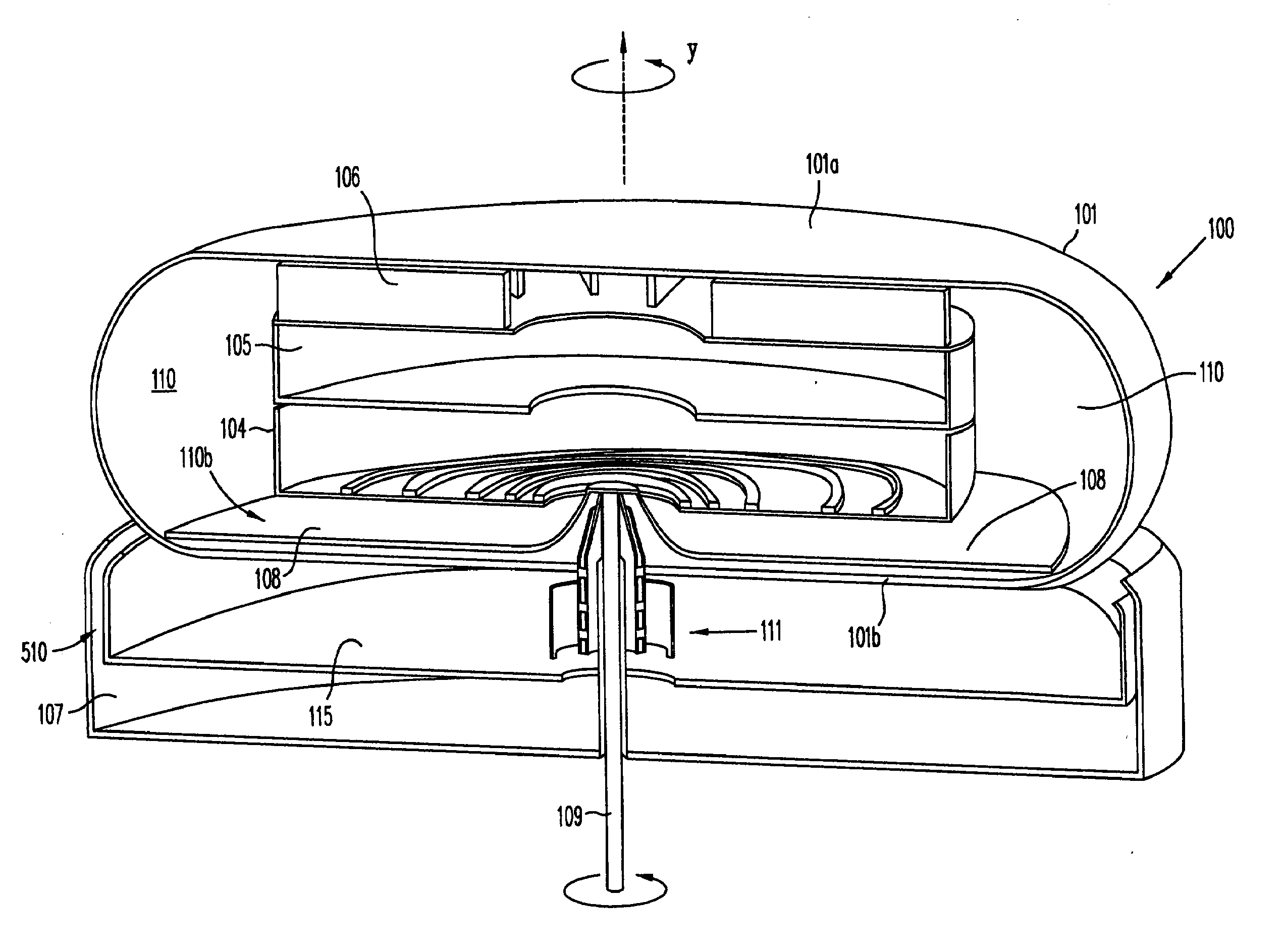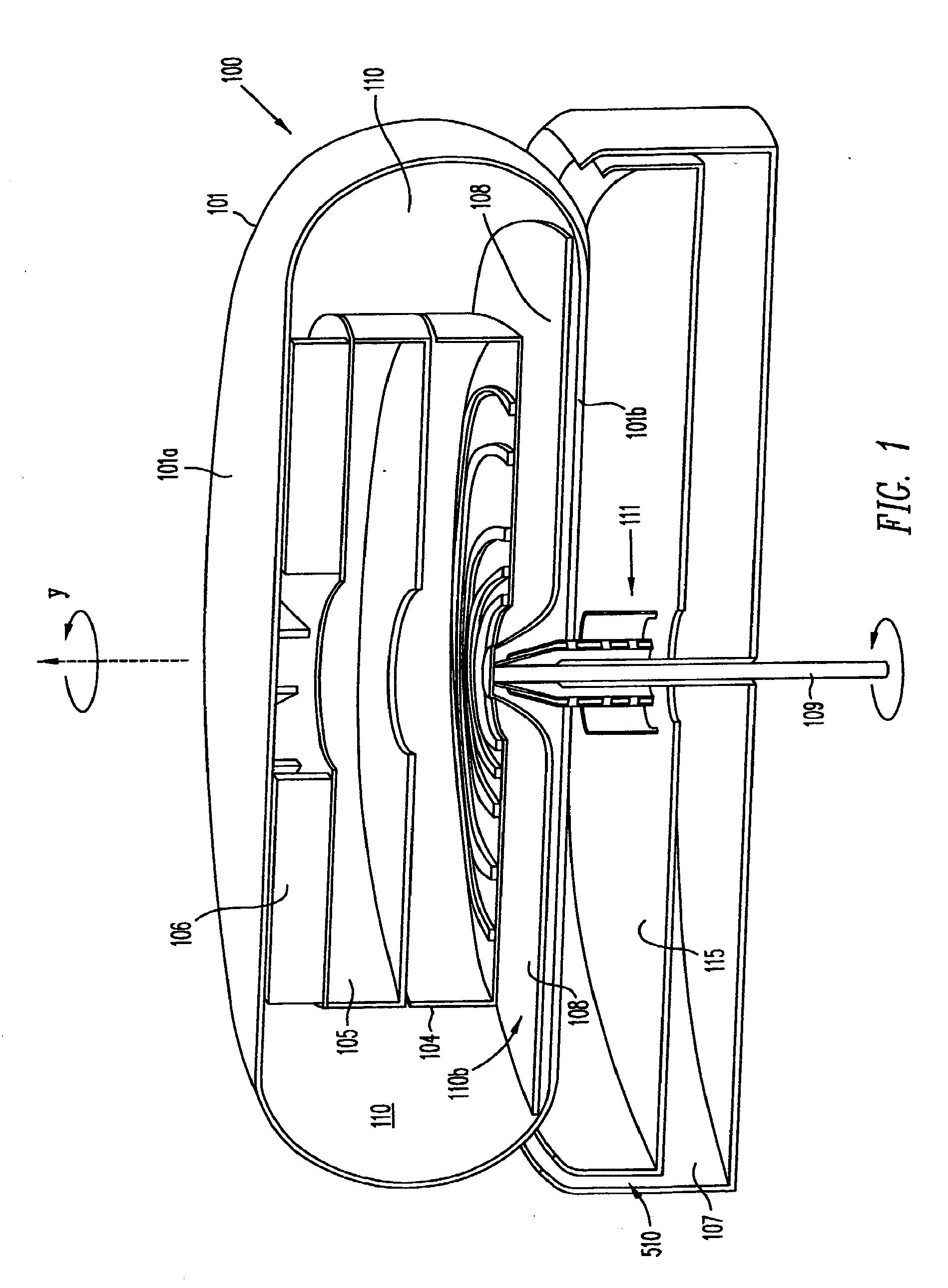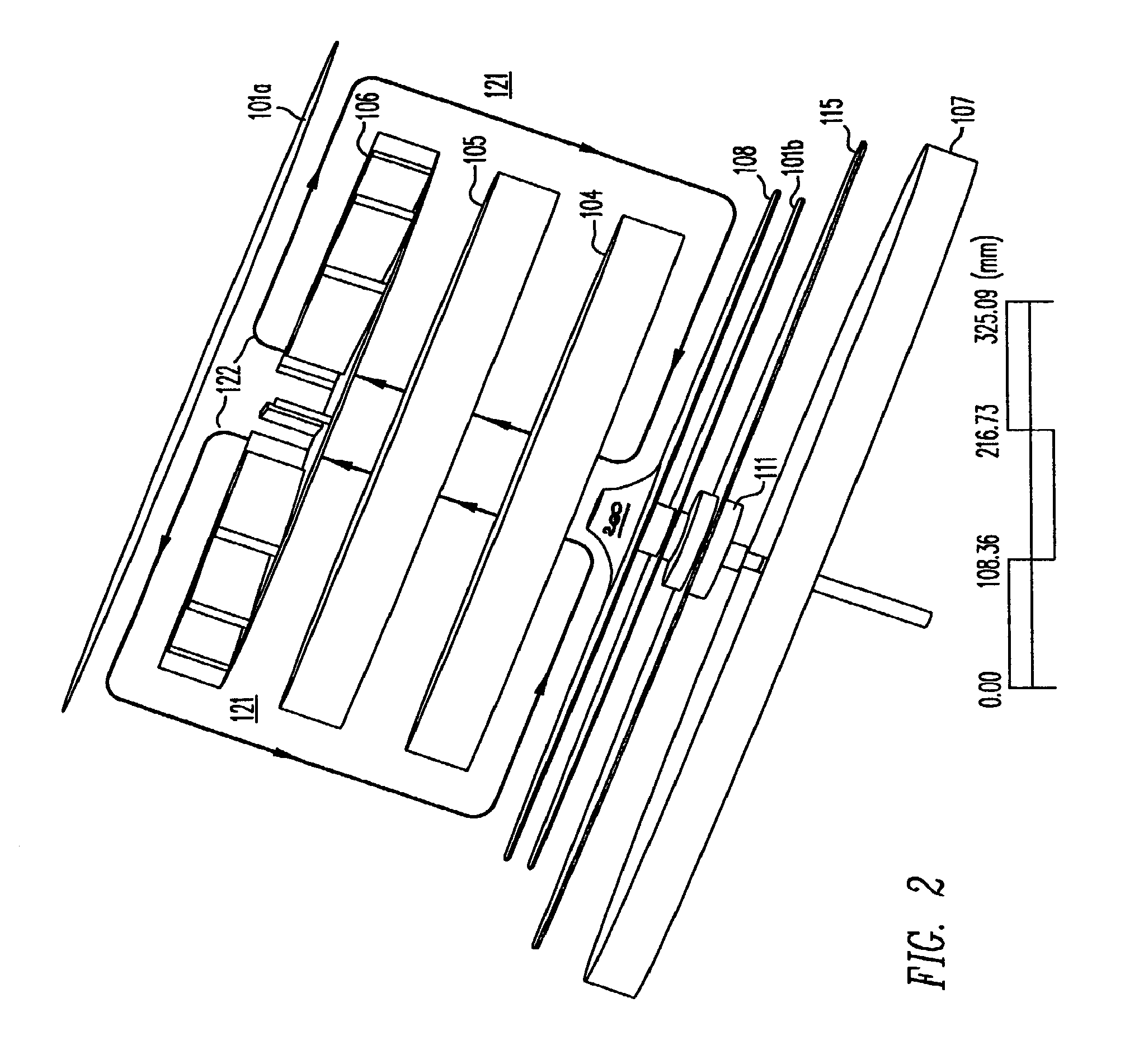Method and system for generation of power using stirling engine principles
a technology of stirling engine and principle, applied in the field of application of stirling engine principle, can solve problems such as engine failur
- Summary
- Abstract
- Description
- Claims
- Application Information
AI Technical Summary
Benefits of technology
Problems solved by technology
Method used
Image
Examples
Embodiment Construction
[0023]The present invention provides a heat engine that operates under Stirling engine principles to convert heat energy from a heat source into mechanical energy. The mechanical energy can be coupled to drive machinery and generators to perform useful work. Examples of a suitable heat source include solar, geothermal, fossil, landfill, recovered or other fuels.
[0024]FIG. 1 shows a cross section view of heat engine 100, including cooling fluid reservoir 107, according to one embodiment of the present invention. As shown in FIG. 1, heat engine 100 includes a chamber 110 enclosed in an enclosure or housing 101. During operation, when a heat source is provided incident on top surface 101a of housing 101, a temperature difference exists between a “hot zone”110a and a “cold zone”110b within chamber 110. The present invention exploits this temperature difference to cause housing 101 to rotate about the axis indicated by “Y” in a manner described below. Because the engine housing rotates d...
PUM
 Login to View More
Login to View More Abstract
Description
Claims
Application Information
 Login to View More
Login to View More - R&D
- Intellectual Property
- Life Sciences
- Materials
- Tech Scout
- Unparalleled Data Quality
- Higher Quality Content
- 60% Fewer Hallucinations
Browse by: Latest US Patents, China's latest patents, Technical Efficacy Thesaurus, Application Domain, Technology Topic, Popular Technical Reports.
© 2025 PatSnap. All rights reserved.Legal|Privacy policy|Modern Slavery Act Transparency Statement|Sitemap|About US| Contact US: help@patsnap.com



